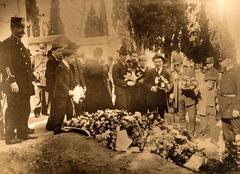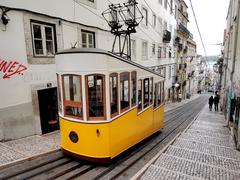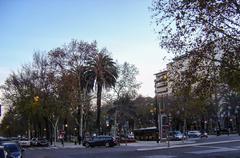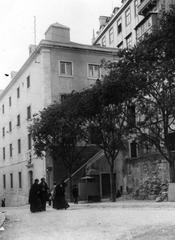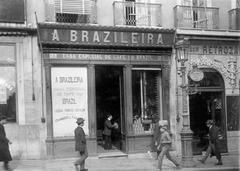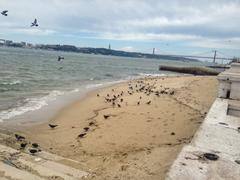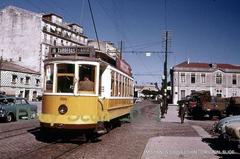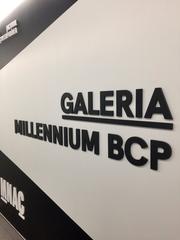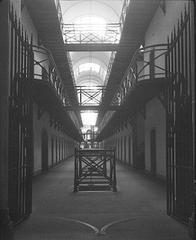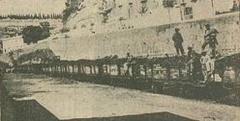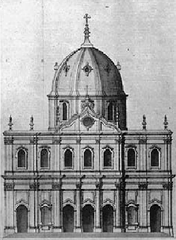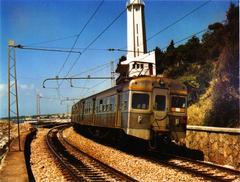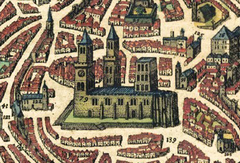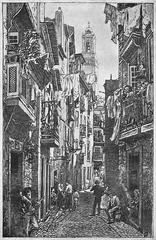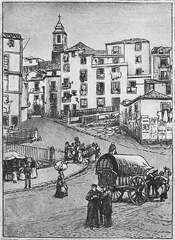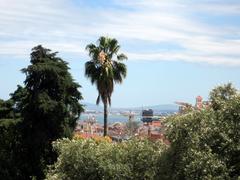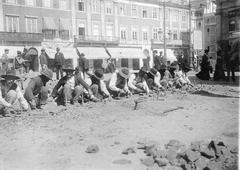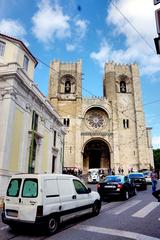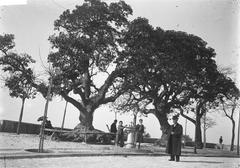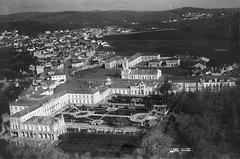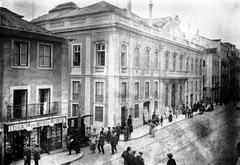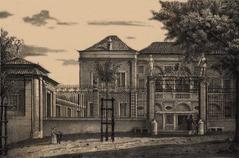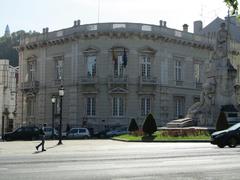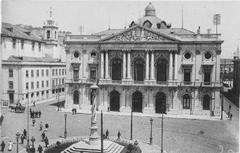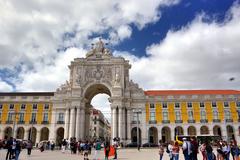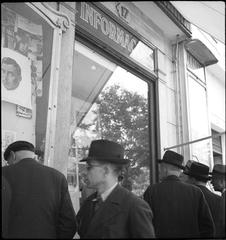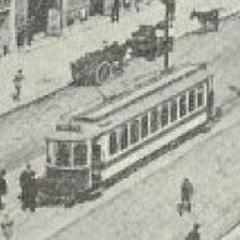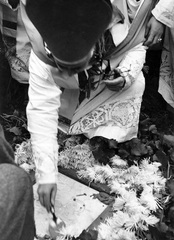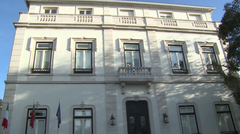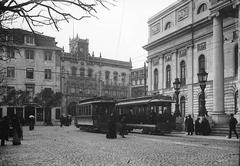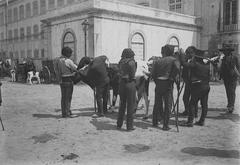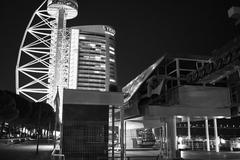
Ponte 25 de Abril: Visiting Hours, Tickets, and History
Date: 17/07/2024
Introduction
The Ponte 25 de Abril is not merely an architectural marvel; it stands as a monumental symbol of Lisbon and Portugal, deeply embedded in the nation’s historical, cultural, and political fabric. Initially inaugurated as ‘Ponte Salazar’ in 1966, named after the Estado Novo dictator António de Oliveira Salazar, the bridge was rechristened following the Carnation Revolution on April 25, 1974, to commemorate the end of the dictatorship and the dawn of democracy in Portugal. This transformation from a symbol of authoritarianism to one of democratic triumph makes Ponte 25 de Abril a unique landmark in Portugal’s history. (Assessing the Economic Impact of Bridges)
Strategically spanning the Tagus River, the bridge not only facilitated the enhanced movement of goods and people but also spurred economic growth and urban development on both sides of the river. Its striking resemblance to San Francisco’s Golden Gate Bridge, a design choice by the American Bridge Company, has rendered it a tourist attraction, drawing visitors from across the globe. (source)
Today, the Ponte 25 de Abril is a vital transportation link and a stage for political demonstrations, celebrations, and public discourse, embodying the spirit of the Portuguese people and their journey towards democracy. This article aims to provide an in-depth exploration of the bridge’s historical significance, economic impact, visitor information, and the unforgettable experiences it offers.
Table of Contents
- Introduction
- Historical and Political Significance of Ponte 25 de Abril
- Economic and Urban Impact of Lisbon’s Ponte 25 de Abril
- Visitor Information
- Panoramic Views and Unforgettable Experiences
- Adventure and Recreation
- Celebrations and Commemorations
- Nearby Attractions and Travel Tips
- Conclusion
- FAQs
Historical and Political Significance of Ponte 25 de Abril
The Salazar Era and the Bridge’s Genesis
The bridge’s origins can be traced back to the Estado Novo regime, a dictatorship led by António de Oliveira Salazar that ruled Portugal from 1933 to 1974. During this period, Lisbon’s growth necessitated a solution for crossing the Tagus River. In 1960, the government awarded the contract for the bridge’s construction to the American Bridge Company, the same company that built the San Francisco-Oakland Bay Bridge. Interestingly, the Ponte 25 de Abril bears a striking resemblance to the Bay Bridge, a testament to their shared lineage. The bridge was inaugurated on August 6, 1966, and named ‘Ponte Salazar’ in honor of the dictator. It was a symbol of progress and modernization during the Estado Novo regime, showcasing Portugal’s engineering prowess to the world.
The Carnation Revolution and a Symbolic Rechristening
The bridge’s name, however, would not last. On April 25, 1974, the Carnation Revolution erupted, ending the Estado Novo regime and ushering in a new era of democracy for Portugal. This bloodless revolution, marked by carnations placed in the barrels of soldiers’ rifles, transformed the country’s political landscape. One of the first symbolic acts of the new government was to rename the bridge ‘Ponte 25 de Abril’ to commemorate the date of the revolution. This act solidified the bridge’s new meaning, transforming it from a symbol of dictatorship to an emblem of freedom and democracy.
The Bridge as a Political Stage
In the years following the revolution, the Ponte 25 de Abril became a focal point for political demonstrations and celebrations. Its prominent location and symbolic weight made it an ideal platform for expressing public sentiment. During the 1980s and 1990s, the bridge witnessed numerous protests and rallies as Portugal underwent significant political and economic changes. These events highlighted the bridge’s role as a public space where citizens could voice their opinions and engage in democratic discourse.
Economic and Urban Impact of Lisbon’s Ponte 25 de Abril
Boosting Economic Activity and Connectivity
-
Enhanced Trade and Commerce: Before the bridge’s construction, crossing the Tagus River was a time-consuming endeavor reliant on ferry services. The bridge dramatically reduced travel times between Lisbon and the southern bank, facilitating the movement of goods and people. This improved connectivity fostered trade and commerce, boosting economic activity on both sides of the river. (Assessing the Economic Impact of Bridges)
-
Tourism and Development: The Ponte 25 de Abril, with its striking resemblance to the Golden Gate Bridge, quickly became a recognizable landmark and a tourist attraction in its own right. This increased tourism brought significant revenue to the city and spurred the development of tourism-related businesses.
-
Real Estate and Investment: The improved accessibility provided by the bridge made the southern bank of the Tagus, particularly areas like Almada and Costa da Caparica, more attractive for residential and commercial development. This led to a surge in real estate investment and population growth in these areas.
Shaping Urban Development and Transportation
-
Decentralization and Urban Sprawl: The bridge’s construction facilitated the expansion of Lisbon beyond its traditional city center. People could live on the more affordable southern bank and commute to work in Lisbon, leading to the growth of satellite towns and suburbs. This, however, also contributed to urban sprawl and its associated challenges, such as increased traffic congestion and pressure on infrastructure.
-
Transportation Infrastructure: The Ponte 25 de Abril became a crucial artery in Lisbon’s transportation network. Its construction necessitated the development of supporting infrastructure, including highways, roads, and public transportation systems, further connecting Lisbon to its surrounding regions.
-
Environmental Considerations: While the bridge brought economic benefits, its impact on the environment has been a subject of debate. Increased traffic volumes contribute to air pollution, and the bridge’s construction and subsequent development have impacted the natural landscape of the Tagus estuary.
Visitor Information
Visiting Hours and Tickets
The Ponte 25 de Abril is accessible to the public all year round. While there is no fee to simply view the bridge, guided tours and certain vantage points may require tickets. It’s advisable to check the official website for up-to-date information on ticket prices and availability.
Guided Tours and Special Events
Guided tours are available for those interested in learning more about the bridge’s history and significance. These tours often include access to restricted areas and provide in-depth insights. Additionally, the bridge is the site of various special events throughout the year, including commemorations of the Carnation Revolution.
Nearby Attractions
The bridge is in close proximity to several other historical sites in Lisbon, including the Belém Tower, the Jerónimos Monastery, and the Monument to the Discoveries. Visitors can easily combine a trip to the Ponte 25 de Abril with visits to these other landmarks.
Accessibility
The bridge is accessible by various modes of transportation, including car, bus, and train. Visitors should plan their trip in advance to ensure they have the best experience possible.
Panoramic Views and Unforgettable Experiences
The bridge offers breathtaking panoramic views of Lisbon, encompassing the city’s historic neighborhoods, the Tagus River, and the Cristo Rei statue standing majestically on the south bank. Visitors can soak in these stunning vistas from various vantage points, including:
- Elevador da Boca do Vento: This panoramic lift in Almada offers unparalleled views of the bridge, the river, and the city skyline.
- Miradouro de Santa Catarina: Perched atop a hill in the Bairro Alto district, this popular viewpoint provides a picturesque perspective of the bridge against the backdrop of Lisbon’s rooftops.
- Jardim 9 de Abril: Situated at the foot of the Cristo Rei statue, this garden offers a unique vantage point for admiring the bridge from the south bank.
Adventure and Recreation
The Ponte 25 de Abril is not just a visual spectacle; it also offers opportunities for adventure and recreation. Thrill-seekers can embark on a guided climbing tour, ascending to the top of one of the bridge’s towers for unparalleled views and an adrenaline-pumping experience. For a more leisurely experience, visitors can cycle or walk across the bridge’s pedestrian walkway, enjoying the fresh air and stunning scenery.
Celebrations and Commemorations
The Ponte 25 de Abril plays a central role in national celebrations and commemorations. Every year on April 25th, Portugal marks the Carnation Revolution, which overthrew the Estado Novo regime in 1974. The bridge, renamed to commemorate this historic event, becomes a focal point for festivities, with parades, concerts, and fireworks illuminating the night sky.
Nearby Attractions and Travel Tips
Nearby Attractions
- Cristo Rei Statue: Located on the south bank, this towering statue offers panoramic views of the bridge and Lisbon.
- MAAT Museum: Located in Belem, the Museum of Art, Architecture, and Technology is a short drive away and offers fascinating exhibits.
- LX Factory: A vibrant cultural and creative hub located in the Alcântara district, offering shops, restaurants, and art installations.
Travel Tips
- Public Transport: The bridge is accessible via bus and train services, making it easy to incorporate into your travel itinerary.
- Best Time to Visit: Early mornings or late afternoons offer the best light for photography and fewer crowds.
- Accessibility: While the bridge itself is accessible, some attractions like the climbing tours may have restrictions. Check ahead for accessibility options.
Conclusion
Today, the Ponte 25 de Abril stands as a powerful reminder of Portugal’s past and a symbol of its democratic present. It serves as a vital transportation link, connecting Lisbon to its southern bank and facilitating economic growth. More than just a bridge, it represents the triumph of democracy over dictatorship and the enduring spirit of the Portuguese people. Visiting the Ponte 25 de Abril is not just about admiring its architectural grandeur; it’s about connecting with a pivotal moment in Portuguese history and appreciating the bridge’s enduring legacy of transformation.
FAQs
What are the visiting hours of Ponte 25 de Abril?
The bridge is accessible all year round. For specific tours and events, check the official website for detailed visiting hours.
Are there guided tours available for Ponte 25 de Abril?
Yes, guided tours are available and provide in-depth information about the bridge’s history and significance.
What other attractions are near Ponte 25 de Abril?
Nearby attractions include the Belém Tower, the Jerónimos Monastery, and the Monument to the Discoveries.
How can I get to Ponte 25 de Abril?
The bridge is accessible by car, bus, and train. Planning ahead is recommended for the best experience.
References
- Assessing the Economic Impact of Bridges, 2024, ResearchGate source

